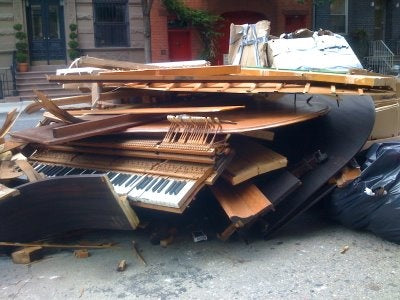
Why Beautiful Vintage Pianos Are Smashed Up and Tipped
Share
On Thursday, at a market, I bought an amazing panel frame comprising a huge fretwork rosewood panel. It's an absolutely stunning piece of workmanship. The panel came from above the keys of an upright piano.
Sadly, another beautiful old Victorian piano was broken up and dumped.
It seems like sacrilege to destroy these wonderful old pieces, many of which are made of exceptional craftsmanship and quality. Pretty much all of them would cost from a lot of money to an absolute fortune.
So why do these fine beasts end up at the tip?
The main reason is the sheer cost of maintenance. I will use an analogy here. If you have a car that is worth £1000 and the engine becomes kaput, and it will take £4000 to replace it, yet when the work is carried out it is still worth £1000, you have been a fool. Essentially it is now worthless so you scrap it. The same goes for a piano, repair costs can be totally prohibitive and the older a piano the more things that can go wrong and the more expensive the upkeep.
Time is not always a great healer, and many pianos simply become unplayable due to damage to the strings, soundboard, or action mechanism. The materials used to make them function, that are often over 100 years old, deteriorate. Pianos are relatively complex machines and there are many functioning parts.
Houses are getting smaller. It is a fact that new houses are compact in terms of space usage. One factor not on the radar for planners these days is space for a piano; put simply, there is declining space for pianos.
Pianos were a force in many homes during the late 19th and early 20th centuries for entertainment; they were quite often a pivotal part of family life. Obviously, this is no longer the case, and one has to simply factor in that people aren't playing the piano as much as they used to, so there simply is not a demand for them.
Technology has advanced so much now that pianos are now quite often simply replaced by keyboards which can reproduce a piano sound without taking up all the space.
Finally, have you ever tried to move a piano. So much wood and iron makes them an absolute costly pain to move in these days where moving house is more prevalent.
It is simply a range of practicalities and changing society that means these amazing mechanical works of art are are simply destroyed. Luckily lot of house clearance people do actually recycle parts of pianos. Many are built around whopping great big iron skeletons and many of the decorative parts, like the panelling I bought on Thursday, are saved and continue life decorating a home.
